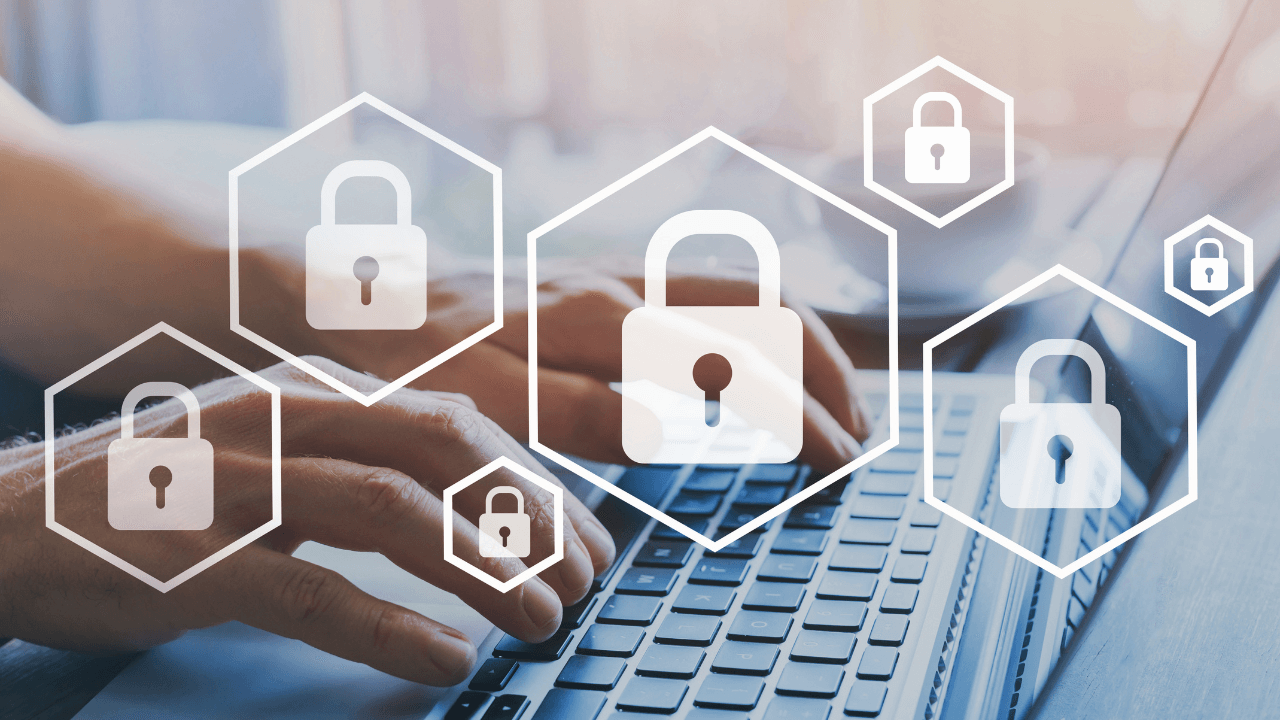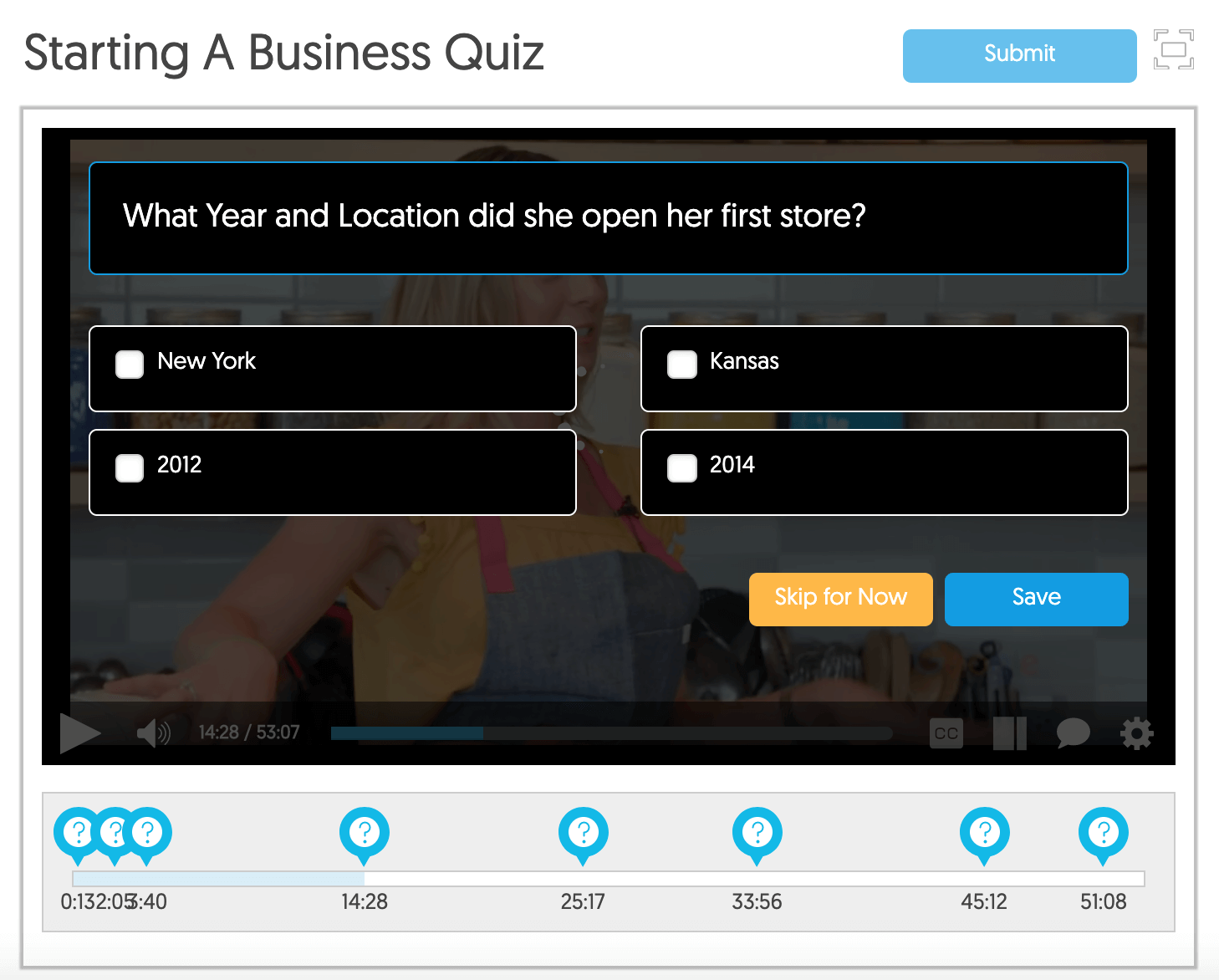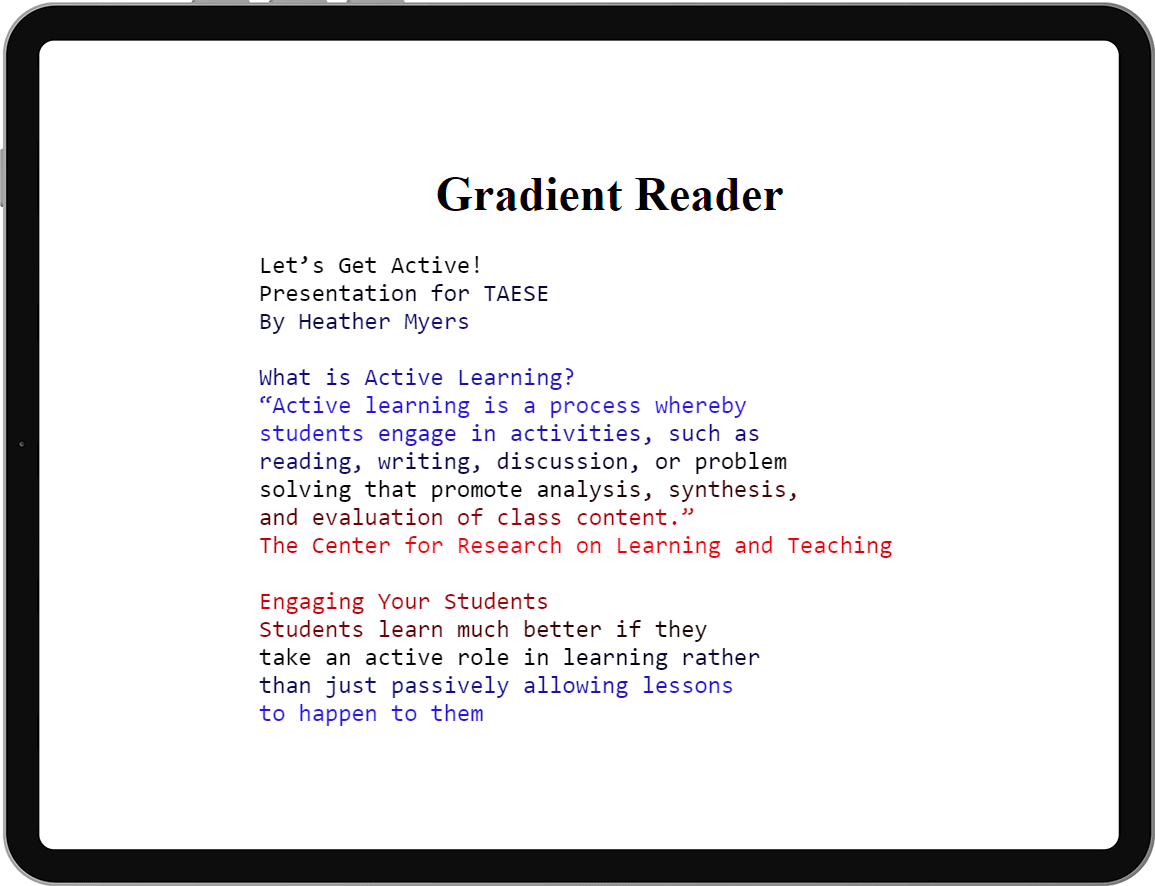Overcoming Barriers in Higher Education Online Exam Proctoring
A recent white paper outlined that a majority of students – 82% of those surveyed – prefer some of their courses take place online. As institutions continue to adjust to hosting fully remote courses and programs, they must carefully consider the experience students have, including exam proctoring.
In this blog, we explore common barriers students face in taking higher education online exams and innovative solutions and technology tools institutions can use to address these challenges.
Security in Test Proctoring is a Top Priority
Maintaining the security and integrity of online exams is a critical concern. Institutions must ensure that students are not cheating. Solutions to enhance exam security include:
Proctoring Technologies: Implement advanced online proctoring tools that use AI to monitor student behavior during exams.
Identification Verification: Implement robust identity verification practices. Some proctoring solutions, like YuJa Verity, offer a simple verification process that doesn’t require extra tools yet gives institutions peace of mind when it comes to academic integrity.
Consider a Lock Down Feature: With a Lock Down feature, instructors can help prevent cheating during proctored tests by disabling new tabs and the clipboard, closing open tabs, and offering a list of links students are allowed to access during a test. The options are customizable for each proctored exam.
Provide Time Management and Flexibility for Students
Many students face challenges managing their time effectively during online exams. To address this, institutions can consider:
“While online education offers unprecedented opportunities for accessibility and flexibility, addressing barriers to online exams is crucial for ensuring a fair and effective assessment process.”
Extended Time Options: Provide flexible time frames for exams to accommodate students with different time-management needs.
Schedule Breaks: Allow short breaks during longer exams to reduce fatigue and enhance concentration.
24/7 Accessibility: Enable students to take exams at times that align with their peak performance hours.
Technological Barriers Must Be Addressed Promptly
Online exams often require a stable internet connection, access to specific software, and compatibility with various devices. Technological barriers can impede students who lack reliable internet access or possess outdated devices.
To address this, institutions can:
Offer Technical Support: Offer a dedicated support team to assist students with technical issues before and during exams.
Provide Flexible Exam Formats: Allow for different exam formats to accommodate students with varying technological capabilities.
Implement Digital Literacy Programs: Introduce digital literacy courses to equip students with the necessary skills for online assessments.
While online education offers unprecedented opportunities for accessibility and flexibility, addressing barriers to online exams is crucial for ensuring a fair and effective assessment process. By planning for and working through common barriers, institutions can create an online learning environment that fosters success for all students.
Celebrating Braille Literacy Month
January is Braille Literacy Month. In 2019, the United Nations General Assembly established January 4 as World Braille Day. Both are aimed at raising awareness of the importance of Braille, though the month also commemorates the legacy of Louis Braille.
What is Braille?
The UN describes Braille as “a tactile representation of alphabetic and numerical symbols using six dots to represent each letter and number, and even musical, mathematical and scientific symbols. Braille (named after its inventor in 19th century France, Louis Braille) is used by blind and partially sighted people to read the same books and periodicals as those printed in a visual font.
According to the New England Consortium on Deafblindness, Braille is used in nearly every country in the world, and there is a braille code for almost every language. Braille has transformed the lives of millions in the context of education, freedom of expression and opinion, and social inclusion. World Braille Day serves as a reminder of Braille in promoting independence, literacy, and equal opportunities for the blind and visually impaired.
About Louis Braille
 Born on January 4, 1809, in Coupvray, France, Louis Braille lost his sight at the age of three after an accident that took place in his father’s harness shop. An infection caused him to lose sight in both eyes.
Born on January 4, 1809, in Coupvray, France, Louis Braille lost his sight at the age of three after an accident that took place in his father’s harness shop. An infection caused him to lose sight in both eyes.
He received a scholarship and, in 1819, he went to Paris to attend the National Institute for Blind Children (where he later taught). At the age of 15, Braille developed the system of touch reading and writing as it’s known today.
Braille based his system on Charles Barbier’s “Night Writing,” which was created for soldiers to communicate safely at night. Barbier’s system was a raised 12-dot cell with each dot or combination of dots representing a letter or phonetic sound. “The problem with the military code was that the human fingertip could not feel all the dots with one touch,” BrailleWorks shared.
Braille’s code was based on a six-dot system. “This crucial improvement meant that a fingertip could encompass the entire cell unit with one impression and move rapidly from one cell to the next. Over time, the world gradually accepted braille as the fundamental form of written communication for blind individuals. Today it remains basically as he invented it.”
The Impact of Braille
Braille is more than a tool for reading and writing; it is a gateway to education, employment, and social inclusion. By providing an alternative means of communication, Braille empowers individuals to navigate the world around them independently.
Promoting Literacy: One of the key contributions of Braille is its role in promoting literacy among the blind and visually impaired. Access to written information is a fundamental right, and Braille facilitates this access for visually impaired individuals. By learning to read and write in Braille, people who are blind can pursue education, access books, and engage in intellectual pursuits, enhancing their overall quality of life.
“Braille is used in nearly every country in the world, and there is a braille code for almost every language. Braille has transformed the lives of millions in the context of education, freedom of expression and opinion, and social inclusion.”
Equal Opportunities in Education and Employment: Braille Literacy Month and World Braille Day emphasizes the need for equal opportunities in education and employment for blind individuals. Integrating Braille into the curriculum and workplace helps ensure that those with visual impairments have the tools they need to succeed. Technology has also played a significant role in expanding access, with Braille displays, electronic Braille books, and assistive devices making information more readily available.
Advocacy and Awareness: Recognizing Braille Literacy Month provides an opportunity for advocacy and awareness campaigns to promote the importance of Braille. Community events, workshops, and educational programs can help dispel myths and misconceptions about blindness and foster a more inclusive society.
By understanding the significance of Braille, we can work toward breaking down barriers and creating a world that is accessible to all.
Five Interactive Learning Trends to Look Out for This Year
Research shows that interactive learning, such as incorporating video, polls, and interactive presentations, is six times more effective in helping students learn.
This article aims to explore five of the most popular interactive learning trends you’ll see in 2024.
1. Mobile First Learning
Smartphones have become an important part of the lives of students and educators alike. A recent study showed that 97 percent of students ages 18 to 29 have a smartphone, and 95 percent of those students bring their phone to class.
“It is not surprising that 46 percent of students prefer completing coursework on their phone.”
It is not surprising that 46 percent of students prefer completing coursework on their phone, and 8 out of 10 students do. This access has driven the uptick in mobile-first learning, which allows teachers and students to use devices such as laptops, iPads, tablets, and smartphones to receive course content without the need for a traditional classroom.
The mobile-first learning environment can be supported with the use of technology such as the YuJa Enterprise Video Platform, YuJa Engage Student Response System, YuJa’s Mobile Apps for tablets and phones.
The Enterprise Video Platform allows institutions to have a video content management system that allows for the storage, management, distribution, and streaming of media content, which can be accessible remotely for educational settings taking place solely online.
The Engage Student Response System enables instructors to make the online learning experience more interactive by allowing students to collaborate and interact with the course content through Polls and Surveys, and providing immediate feedback.
YuJa also offers a mobile app for those who strictly uses a phone or tablet for learning, which offers HTML5 players and native apps for users to watch, record, upload and download content.
2. Gamified Learning
Gamified learning, or gamification, is another popular trend on the uptick in the world of higher education.
This approach integrates game elements into educational concepts, which increases the engagement and interaction from learners. This can be done through Polls and Surveys, which results in numerous benefits, including immediate feedback, an increase in critical thinking, and collaboration.
The YuJa Engage Student Response system is one way you can take part in this trend as it changes passive learning settings into an interactive experience by allowing instructors to gamify course content. This includes allowing instructors to create Polls with various question types such as short-answer, fill-in-the-blank, matching, true or false, and more. This platform also allows students to see clickable images for interactivity with visual materials.
3. Collaborative Learning
Collaboration is paramount in higher education today. Collaborative learning is similar to any collaborative session in that it has small groups of students work together to problem solve, innovate or complete a task. This in and of itself is not a new concept; however, in today’s digital age technology has given institutions the ability to do this online for students. YuJa offers LMS, third-party hardware and conferencing connectors for the video platform that allow instructors to streamline workflows and make course content more accessible to students.
Offering a collaborative learning environment in remote settings also gives students the ability to collaborate from multiple locations outside of the classroom and traditional hours.
4. Social Learning
Social learning is an environment in which students learn by observing or interacting with their peers. This is not a new concept in higher education, but how it applies to the use of technology in education is newer.
Educators are now tasked with creating an atmosphere that fosters connection, collaboration and engagement beyond the traditional walls of a classroom. This change in tactics can be seen through the increased use of flipped classrooms where learning takes on a more interactive role during physical classroom hours and course content is consumed prior to class.
This approach gives students more flexibility in consuming course content, empowers them to take ownership of their learning, and deepens their relationships in the classroom because it allows them to work more closely together. YuJa can help facilitate flipped classrooms, allowing both students and instructors to focus on the course content rather than technology.
5. Microlearning
While historically used in corporate training, microlearning has made its entrance into the world of higher education. Microlearning is typically used when lessons or concepts are taught in short, concise pieces of content.
By keeping content short, concise and chunked into smaller concepts allows for better retention. Microlearning is ideal because it offers more flexibility and control for students of what and when they learn — which can be especially beneficial for students who are attending classes online, those who are working, or who have other responsibilities that need tended to during regular school hours.
YuJa’s ed-tech tools can assist in not only the creation of micro lessons but also increase engagement video quizzes, analytics, and more.
Looking Ahead
Trends this year all support collaborative and interactive learning environments, regardless of location or device used. While the wheel of effective teaching in 2024 may be reinvented from years ago, the goal of education has remained the same — to give students the opportunity and support needed for educational success.
YuJa’s Top 10 Most Read Blogs of 2023
Take a look back at your favorites, catch up on what you missed, and get ready for another year in higher-ed technology insights.
1. How to Record Lecture Videos: Lecture capture solutions have enabled instructors to record course-related videos just about anywhere. In this blog, we share five steps to get you started recording your own videos.
2. Challenging Advanced Students With Differentiated Instruction: Differentiated instruction, seen both as a teaching philosophy and instructional strategy, is one method instructors can use to support and challenge learners at all levels. In this blog, we outline ideas for challenging high achievers.
3. YuJa Announces 2023 Scholarship Winner: 170 students submitted essays to the scholarship essay contest last year. A panel of judges selected Esther Kim, a University of Southern California student, as the winner.
4. How Gradient Text Makes Content More Accessible to All: Gradient readers can help people process information. Studies have shown that while using this type of technology, people read further down a page and are more likely to read to the end than when text was presented in a traditional format. In this blog, we share what gradient text is and how it can help people learn.
5. Blended Learning vs Flipped Classroom: Each modality integrates both online and classroom learning, but they each have advantages in higher education. In this blog, we define each and share potential use cases for each.
6. What is Scalable Video Transcoding: Transcoding is a process that happens after encoding, which dictates how raw data is compressed and formatted into a video file. This blog explains the process, advantages and benefits of scalable transcoding.
7. Tips for Maximizing YuJa Video Quality Within Lecture Capture: Video technology is a valuable tool in improving student engagement and facilitating remote learning in higher education. In this blog, we outline ways to use your video platform to enhance student engagement.

8. Flipped Classroom 101: A History, Benefits and Tools for the Learning Model: Flipped classrooms offer a host of benefits for students, teachers and parents alike. In this blog, we cover the history of the learning model, benefits of its use, and tools to facilitate flipping your classroom.
9. How to Deliver and Record an Effective PowerPoint Presentation: For most organizations, PowerPoint remains the default tool used to deliver presentations. This blog (written in 2020) gives advice for delivering an effective presentation. If it were written today, we’d include a point on gamifying your presentation with interactive polls and surveys.
10. Live Streaming in Higher Education: Colleges, universities and other enterprises have been able to implement live streaming as one of a variety of tools to aid students in their education. In this blog, we cover its history, benefits, and examples of how some institutions use it to help deliver content to students.
Five Advantages of Lockdown Proctoring in Higher Education
While the primary purpose of a lockdown app is to maintain the integrity of the assessment by minimizing opportunities for cheating and unauthorized access to information, there are a variety of other advantages to using this type of browser in higher education testing:
Reduced Cheating Opportunities: Lockdown apps prevent users from accessing other websites, applications, or files on their device during the assessment. This significantly reduces the chances of cheating through conducting online searches, copying answers, or using unauthorized resources. Lockdown apps are integrated with remote proctoring services that use webcam and microphone monitoring to deter and detect cheating behaviors. This adds an additional layer of integrity to the assessment process.
Compatibility: Lockdown apps are designed to work with various learning management systems (LMS) and online testing platforms, making them adaptable to different educational environments.
Enhanced Security: Lockdown apps often have built-in security measures that help prevent various forms of cheating, such as copying and pasting, taking screenshots, and using virtual tools. Lockdown proctoring can also disable certain browser features, such as right-clicking and opening new tabs, to prevent users from exploiting these features to cheat or access unauthorized content.
Consistent Testing Environment: Lockdown apps create a standardized testing environment for all students, regardless of their device or operating system. This helps ensure fairness and consistency in the testing process. Additionally, lockdown apps are often used for browser-based assessments that require students to interact with online content, simulations, or tools, which can provide a more dynamic and engaging testing experience.
Data Collection and Analytics: Lockdown proctoring systems can collect data on student interactions during assessments, providing educators with insights into how students approach and engage with the content.
Generate Confidence in Every Testing Environment
No matter how an institution conducts tests, it’s important to offer support so students understand what to expect and how to resolve any issues that arise without leaving their quiz page, and so instructors feel confident in the assessment process.
YuJa Kicks Off its Annual Scholarship Essay Contest For High School and Undergraduate Students
YuJa is excited to announce its annual scholarship essay contest, which invites students from all walks of life to share their unique stories and insights about their educational journey in the age of online learning.
How to Enter
Entering the contest is easy. Head over to yuja.com/scholarship to find all the details, including submission guidelines, deadlines, eligibility criteria, and the submission form.
This year’s question is: “How has online learning impacted your educational journey?” Students are asked to reflect on their experience with online education and discuss how it has influenced their learning style, study habits, and overall academic performance.
All entries must be the original work of the student and not AI generated.
Why Participate?
- Showcase Your Story: This contest is an excellent opportunity for you to showcase your unique journey through online education. Share the challenges you’ve overcome, the lessons you’ve learned, and the triumphs you’ve experienced.
- Contribute to the Conversation: By participating in this essay contest, you contribute to a broader conversation about the impact of online learning on students. Your perspective adds value to the ongoing dialogue about the future of education.
- Win a Scholarship: One student will be selected to win a $1,000 scholarship to help support their educational pursuits.
Visit YuJa.com/scholarship for more information, frequently asked questions, or to read past winning essays.
How to Create a User-Friendly Online Test Proctoring Experience
Institutional leaders should consider that students have different needs, and remember that creating a flexible, yet secure and user-friendly online proctoring experience is important to students’ educational experience. To create a consistent and positive online test proctoring experience:
Choose a Reliable Proctoring Solution: Look for an online proctoring solution that offers basic and advanced features your institution needs, such as LMS integration, ID verification and secure browser options to ensure a robust and secure test environment.
“Ensure students understand technical requirements, proctoring process, how to start and end their exam, and how to get support during a test.”
Provide Clear Communication: Effective communication is key to a successful online proctoring experience. Ensure students understand technical requirements, proctoring process, how to start and end their exam, and how to get support during a test.
Offer Flexibility in Exam Settings: Different courses require different levels of student monitoring. Look for a solution that offers Instructors the choice to record video and audio through webcams and microphones, monitor web traffic to track visited sites and URLs, limit screen usage to a single monitor, disable new tabs, close open tabs, disable the clipboard, and implement ID verification. For enhanced monitoring, look for live proctoring options.
Ensure a Seamless Learning Management Systems Integration: Integrate the online proctoring solution with your institution’s Learning Management System to simplify the test setup process and help instructors create a cohesive experience.
Continuously Educate Faculty and Staff: Train instructors and staff on how to use test proctoring effectively. Ensure they are familiar with the features available and can troubleshoot common issues and they understand how to view and interpret results.
Data Security and Privacy Compliance: Prioritize data security and comply with privacy regulations. Ensure the proctoring platform adheres to industry standards for data protection, safeguarding student privacy throughout the proctoring process.
As higher-ed technology and online proctoring solutions continue to evolve, it’s important to refine strategies to meet the needs of remote students and instructors. Through a thoughtful and proactive approach, institutions can maintain the integrity of online assessments while fostering a positive and inclusive online learning environment.
The Power of Data and Analytics in Higher Education
The utilization of data and analytics offers a personalized online learning environment that increases engagement and helps identify learning gaps.
Overview of Data and Analytics
Data and analytics refers to the systematic collection, analysis, and interpretation of information to inform decision-making, enhance institutional effectiveness, and improve the overall learning experience. In higher education, data and analytics can be used to improve the overall educational experience for students from processes used to teach to best practices and outcomes.
“Analytics provide a wealth of information helpful for making decisions.“
Every aspect of learning can be broken down into categories such as attendance, average grades, feedback, test scores, activity online, and more, which all provide quantitative and qualitative data. This information can be especially useful when trying to answer questions, make a decision or solve a problem.
Using Data and Analytics to Improve Education
Analytics provide a wealth of information helpful for making decisions. Two powerful areas data and analytics can inform are student success and overall course outcomes. Doing a deep dive, universities and professors can use data to evaluate the overall academic performance of students to help make improvements to a particular course, or revamping a course all together to meet the needs and demands of students. Analytics can:
Identify gaps in learning: Administrators and instructors can determine which portions of a class’s curriculum students are universally struggling with. This can lead to the improvement of material within courses.
Provide personalized learning: Through data analytics, professors can more easily identify “at-risk” students and reach out to provide additional support before the student drops out or fails. With personalized learning pathways, instructors can tailor materials to individual students based on their learning styles and preferences. 
Improve engagement: In addition to improving best practices, data analytics give professors the opportunity to improve overall student engagement, which creates a more meaningful learning experience. In addition to assisting with creating the most effective course design, using data and analytics can help educators create an online learning environment that fosters communication and collaboration between students and with their professors.
Measure institutional performance: Data and analytics play a crucial role in measuring and improving institutional performance. By tracking key performance indicators (KPIs) such as graduation rates, student satisfaction, and alumni success, institutions can identify areas that need attention and implement targeted strategies for improvement.
At the end of the day, higher-ed instructors have the same goal — to provide the best overall learning experience for students. Historically, this required educators to see between the lines to make changes when needed. In today’s ever-changing learning environment, data and analytics gleaned from that data are powerful tools in helping educators make decisions on how to provide the best learning environment, quickly and efficiently. This ultimately gives them more time to do what matters: educate.
How Single Sign-On Streamlines Access in Higher Education
What is SSO?
Single Sign-On (SSO) is an authentication process that allows a user to access multiple applications or systems with a single set of login credentials, such as their username and password. Instead of requiring users to remember and enter different usernames and passwords for each application, SSO enables them to log in once and gain access to all authorized systems without the need to re-enter their information. In higher education, SSO simplifies access to an institution’s learning management system (LMS) and other applications.
Enhancing the Higher-Ed User Experience
In higher education, students, faculty, and staff interact with many digital platforms, from learning management systems to email, library resources, and more. SSO simplifies this experience, reducing the frustration of managing multiple login credentials and saving time for more meaningful academic and administrative tasks. Institutions can foster a more collaborative and streamlined learning and administrative environment by unifying access to all platforms under a single authentication umbrella.
“Institutions can foster a more collaborative and streamlined learning and administrative environment by unifying access to all platforms under a single authentication umbrella.“
Key Components of Single Sign-On
With SSO integration, institutions can provide seamless access to websites and applications regardless of a student’s physical location or device. Key components of SSO include:
Authentication Mechanisms: SSO systems use robust authentication mechanisms to verify the identity of users. This can include traditional username and password combinations, biometric authentication, or multi-factor authentication (MFA) for an added layer of security.
Identity Provider (IdP): The IdP is a crucial element in the SSO infrastructure. It is responsible for authenticating users and providing tokens or assertions that can be used to access other services within the SSO ecosystem.
Service Providers (SP): Service providers are the applications or platforms that users want to access. These services rely on the authentication the IdP provides, allowing users to move between them without needing additional logins.
Advantages of SSO in Higher Education 
The benefits of SSO in higher education are numerous:
Simplified user account management – From an administrative perspective, SSO simplifies user account management. When a user’s credentials change, such as when they update their password, the changes are reflected across all connected services, reducing the workload for IT teams.
Robust security measures – SSO systems often incorporate robust security measures, such as multi factor authentication, ensuring user accounts remain secure. Institutions can better monitor and control access to sensitive data by centralizing authentication processes.
Ability to quickly scale and integrate new applications – As new applications are adopted, integrating them into the SSO system is more straightforward, which promotes scalability and adaptability.
Embracing Single Sign-On is not just a technological choice; it’s a strategic move toward a more agile, secure, and user-friendly educational ecosystem.
Six Reasons to Incorporate In-Video Quizzing Into Higher Education Lectures
-
-
-
- Active engagement encourages a deeper understanding of course material: In-video quizzing prompts students to think critically about course content. Instead of passively absorbing information or walking away from a video as it plays, students become active participants in their learning journey, fostering a deeper understanding of the material. In addition, studies have shown that in-video quizzing can help boost retention as students are prompted to recall information as they learn it and are encouraged to learn key concepts before moving on.
“Students become active participants in their learning journey, fostering a deeper understanding of the material.”
- Students receive immediate feedback to help them course correct: One of the key benefits of in-video quizzing is that students get immediate feedback, which allows them to identify and address areas they don’t understand right away. This quick feedback loop contributes to a more effective learning process.
- Formative assessments help gauge understanding: In-video quizzing serves as a formative assessment tool, providing instructors with valuable insights into student understanding. This data can guide instructors on how to adjust their teaching approach to address areas where students may be struggling.
- In-video quizzing caters to different learning styles: By providing a multimedia approach to learning, in-video quizzing accommodates diverse learning styles, including visual and auditory. This makes the material more accessible to students. In addition, instructors can customize their quizzes to align with learning objectives, catering to individual student needs and creating a more adaptive learning experience.
- Analyzing assessment data can guide instructors on intervention: By analyzing analytics from in-video quizzing, instructors can identify problem areas that exist both for individuals and among larger groups. This data-driven approach allows targeted interventions to support students in areas where they may need additional help.
- In-video quizzes help students prepare for summative assessments: In-video quizzes serve as valuable preparation for larger, summative assessments. They help students identify knowledge gaps early on, providing them time for review and clarification before major exams.

- Active engagement encourages a deeper understanding of course material: In-video quizzing prompts students to think critically about course content. Instead of passively absorbing information or walking away from a video as it plays, students become active participants in their learning journey, fostering a deeper understanding of the material. In addition, studies have shown that in-video quizzing can help boost retention as students are prompted to recall information as they learn it and are encouraged to learn key concepts before moving on.
-
-
